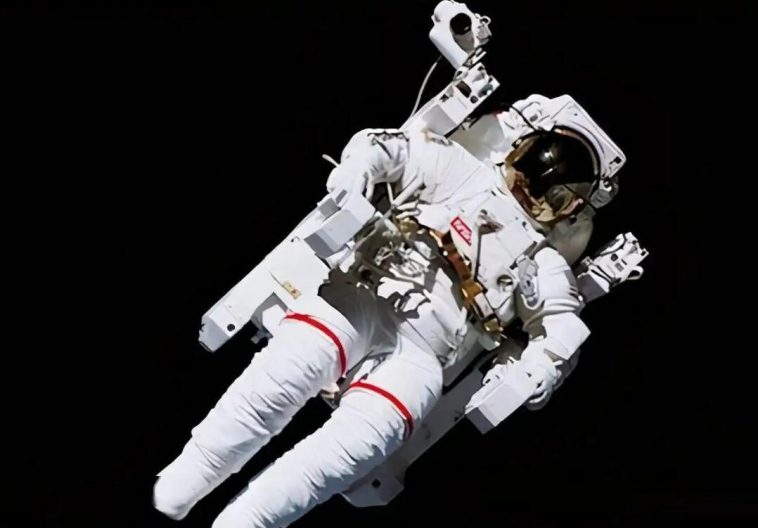At the end of the last century, under the leadership of the United States and Russia, they jointly built the International Space Station with the remaining 11 member states of the European Space Agency. For many years, the International Space Station has become a springboard for human exploration of the universe, which is an important milestone in the history of human spaceflight.
Today, many years later, the constant failure of the International Space Station reminds people that it needs to be repaired, but today the United States and Russia are more than enough to pay for the high maintenance costs.
Today, we mainly take stock of the $5 million spacesuits worn by the astronauts of the Chinese space station when they leave the capsule. Why can’t they bring them back?

At the end of the last century, under the leadership of the United States and Russia, they jointly built the International Space Station with the remaining 11 member states of the European Space Agency. For many years, the International Space Station has become a springboard for human exploration of the universe, which is an important milestone in the history of human spaceflight. .
In April 2021, the Shenzhou 12-manned spacecraft carrying three outstanding Chinese astronauts entered the Chinese space station for a three-month space flight mission.
Why can’t the 30 million yuan spacesuits worn by the astronauts of my country’s space station be brought back?
The aerospace industry itself is a very expensive scientific research project. In many cases, whether it is a spacecraft or other aerospace facilities, it is built with the concept of saving some or some. If it costs a lot, I will find a way to bring it back. Earth’s secondary use.
But you know what? The cost of spacesuits that astronauts can wear out of the cabin is as high as 5 million US dollars, but such an expensive piece of clothing cannot be brought back to Earth for secondary use or recycling. Today we will tell you why.

Nothing related to the aerospace industry is cheap, but not a penny is spent.
The extravehicular spacesuit this time is different from any previous spacesuit, because the previous out-vehicle activities only stayed on the surface of the out-vehicle, and this time-out activity still needs some work.
Therefore, in terms of convenience, there is a qualitative improvement compared to the previous spacesuits. Moreover, due to the blessing of the robotic arm for this extravehicular activity, the extravehicular spacesuit does not need to be equipped with a propulsion system, which can further optimize its performance. Generally speaking, the first point is reflected in “convenience” and “flexibility”.
Secondly, through the connection between Liu Bombing and the ground, we can know that the sound quality transmitted by this extravehicular spacesuit has also been greatly improved compared with the spacesuit of Shenqi. This shows from the side that the extravehicular spacesuit The internal life support system has been fully optimized including but not limited to the oxygen supply system.
Also, although the extravehicular suit is a kind of clothing, its essence is already a miniature space capsule or an active space capsule that can freely change shape.
The new generation of extravehicular clothing, out of the cabin underwear, liquid-cooled suits, and space suits. Although they have been wrapped layer by layer and weighed 130 kg, this space suit is not only easy to put on and take off but also greatly reduced for the astronauts. Physical exertion outside the cabin.
Finally, a summary is made. Under the description of the language, the new generation of space suits has carried out a series of upgrades in terms of working time, activity performance, and activity support, but the difficulty of doing these is not easy to describe in a few words.
After all, going out of the cabin is not going out on the earth, and a slight error will endanger the lives of the astronauts. Although the extravehicular suits worth 30 million are not cheap, they are always dwarfed by their contributions to human spaceflight.

Why can’t extravehicular suits be brought back to Earth?
Extravehicular suits are not disposable, but they cannot be brought back to Earth. Many people may think that the reason why the extravehicular suit cannot be brought back to Earth is that the extravehicular suit has been exposed to radiation or some other unknown risk factors in space, but this is not the case.
The interior space of any kind of spaceflight equipment is not very large, even the manned return capsule, its interior is still very limited. But the extravehicular suit weighs 130 kilograms and is bulky. In addition, there are three astronauts squeezed into one cabin. Under such conditions, it will undoubtedly greatly increase the difficulty of successfully returning to the earth if the astronauts’ extravehicular suits are brought back. Therefore, the spacesuits cannot follow suit. Returning to Earth with the astronauts.
Although it can’t be brought back to Earth, don’t be too distressed. After all, it still costs 30 million yuan. The extravehicular suit will be placed in the space station by the astronauts and put on until the next mission.
It is worth mentioning that the extravehicular spacesuit has a strict shelf life. Its shelf life is three years. In addition, there is an additional condition, that is, the maximum number of times of use is 15 times, reaching any standard extravehicular suit. Must be honorably laid off.




Why are there no humans doing this type of recycling business?